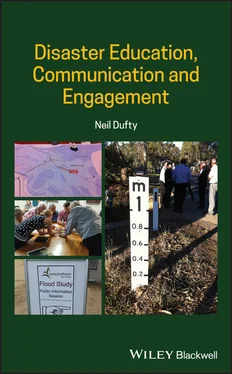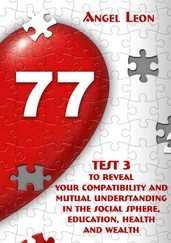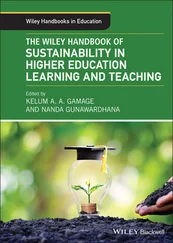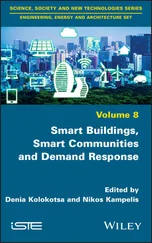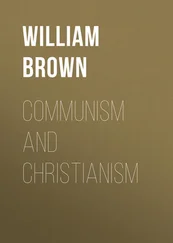34 International Strategy for Disaster Reduction (2006). Developing early warning systems: a checklist. Third International Conference on Early Warning, Bonn, Germany.
35 Jaeger, C.C., Renn, O., Rosa, E.A., and Webler, T. (2001). Risk, Uncertainty, and Rational Action. London: Earthscan.
36 Jasanoff, S. (1998). The political science of risk perception. Reliability Engineering and Systems Safety 59: 91–99.
37 Kapucu, N. (2006). Interagency communication networks during emergencies: boundary spanners in multiagency coordination. American Review of Public Administration 36: 207–225.
38 Keating, A., Campbell, K., Szoenyi, M. et al. (2016). Development and testing of a community flood resilience measurement tool. Natural Hazards and Earth System Sciences 17: 77–101.
39 Kelly, B. and Ronan, K.R. (2018). Preparedness for natural hazards: testing an expanded education- and engagement-enhanced social cognitive model. Natural Hazards 91 (1): 19–35.
40 Kelman, I. (2018). Lost for words amongst disaster risk science vocabulary? International Journal of Disaster Risk Science 9 (2): 281–291.
41 Klonner, C., Marx, S., Usón, T. et al. (2016). Volunteered geographic information in natural hazard analysis: a systematic literature review of current approaches with a focus on preparedness and mitigation. ISPRS International Journal of Geo-Information 5: 103.
42 Knowles, M.S. (1950). Informal Adult Education. Chicago, IL: Association Press.
43 Knowles, M. (1970). The Modern Practice of Adult Education: Andragogy Versus Pedagogy. New York: Associated Press.
44 Liu, W., Dugar, S., McCallum, I. et al. (2018). Integrated participatory and collaborative risk mapping for enhancing disaster resilience. ISPRS International Journal of Geo-Information 7: 68.
45 Mansuri, G. and Rao, V. (2004). Community-based and -driven development: a critical review. The World Bank Research Observer 19 (1): 1–39.
46 McCaffrey, S.M., Velez, A.-L.K., and Briefel, J.A. (2013). Differences in information needs for wildfire evacuees and non-evacuees. International Journal of Mass Emergencies and Disasters 31 (1): 4–24.
47 Meier, P. (2011). What is Crisis Mapping? An Update on the Field and Looking Ahead. [Online]. Available: http://irevolution.net/2011/01/20/what-is-crisis-mapping(accessed 19 June 2019).
48 Meier, P. (2012). Crisis mapping in action: how open source software and global volunteer networks are changing the world, one map at a time. Journal of Map and Geography Libraries 8: 89–100.
49 Mileti, D.S. and Sorensen, J.H. (1990). Communication of Emergency Public Warnings – A Social Science Perspective and State-of-the-Art Assessment. Oak Ridge, Tennessee, USA: Oak Ridge National Laboratory, ORNL-6609.
50 Militello, L.G., Patterson, E.S., Bowman, L., and Wears, R. (2007). Information flow during crisis management: challenges to coordination in the emergency operations center. Cognition, Technology and Work 9: 25–31.
51 Morgan, M.G., Fischhoff, B., Bostrom, A., and Atman, C.J. (2001). Risk Communication: A Mental Models Approach. Cambridge, MA: Cambridge University Press.
52 Mosse, D. (2003). The making and marketing of participatory development. In: A Moral Critique of Development: In Search of Global Responsibilities (eds. P. Quarles van Uffard and A. Giri), 42–75. London and New York: Routledge.
53 Neef, M., van Dongen, K., and Rijken, M. (2013). Community-based comprehensive recovery: closing collaboration gaps in urban disaster recovery. In: Proceedings of the 10th International Conference on Information Systems for Crisis Response and Management., 546–550. Baden-Baden, Germany: ISCRAM 2013.
54 Nowell, B. and Steelman, T. (2015). Communication under fire: the role of embeddedness in the emergence and efficacy of disaster response communication networks. Journal of Public Administration Research and Theory 25 (3): 929–952.
55 Owens, T. (2019). Crowdsourcing. [Online]. Available: http://www.trevorowens.org/tag/crowdsourcing(accessed 19 June 2019).
56 Preston, J. (2012). Disaster Education: ‘Race’, Equity and Pedagogy. Rotterdam, The Netherlands: Sense.
57 Pretty, J. and Hine, R. (1999). Participatory Appraisal for Community Assessment. Centre for Environment and Society, University of Essex.
58 Queensland Department of Emergency Services (2001). Charter for community engagement, Community Engagement Unit, Strategic and Executive Services. Queensland Department of Emergency Services.
59 Renn, O. (2008). Risk Governance: Coping with Uncertainty in a Complex World. London: Earthscan.
60 Rogers, C. (1969). Freedom to Learn: A View of What Education Might Become. Columbus, OH: Charles E. Merrill.
61 Rosa, E.A. (2008). White, black and grey: critical dialogue with the international risk governance council's framework for risk governance. In: Global Risk Governance: Concept and Practise of Using the IRGC Framework (eds. O. Renn and K. Walker), 101–118. Springer.
62 Rosa, E.A. and Clarke, E. (2012). A collective hunch? Risk as the real and elusive. Journal of Environmental Studies and Sciences 2 (1): 39–52.
63 Science Communication Unit, University of the West of England, Bristol (2014). Science for Environment Policy Future Brief: Public Risk Perception and Environmental Policy. Report produced for the European Commission DG Environment, September 2014.
64 Seeger, M.W. (2006). Best practices in crisis communication: an expert panel process. Journal of Applied Communication Research 34 (3): 232–244.
65 Shaw, R., Shiwaku, K., and Takeuchi, Y. (2011). Disaster Education. Bingley, UK: Emerald.
66 Shreve, C., Fordham, M., Anson, S., et al. (2014). Report on Risk Perception and Preparedness. TACTIC Project, North Umbria University.
67 Soden, R. (2017). Citizens' Participation and Crowdsourcing. Words into Action Guidelines: National Disaster Risk Assessment Special Topics. United Nations Office for Disaster Risk Reduction.
68 Spence, P.R., Lachlan, K., Burke, J.M., and Seeger, M.W. (2007). Media use and information needs of the disabled during a natural disaster. Journal of Health Care for the Poor and Underserved 18 (2): 394–404.
69 Starkey, E., Parkin, G., Birkinshaw, S. et al. (2017). Demonstrating the value of community-based (‘citizen science’) observations for catchment modelling and characterisation. Journal of Hydrology 548: 801–817.
70 Steelman, T.A. and McCaffrey, S. (2013). Best practices in risk and crisis communication: implications for natural hazards management. Natural Hazards 65: 683–705.
71 Terpstra, T., Enader, A., Gutteling, J., and Kuhlicke, C. (2017). Public Perception of Risk in Science for Disaster Risk Management 2017: Knowing Better and Losing Less. Office of the European Union.
72 Tierney, K. (2014). The Social Roots of Risk: Producing Disasters, Promoting Resilience. Stanford, USA: Stanford University Press.
73 UNISDR (2017). Terminology on disaster risk reduction [Online]. Available: https://www.unisdr.org/we/inform/terminology(accessed 19 June 2019).
74 United Nations Educational, Scientific and Cultural Organization (2012). The International Standard Classification of Education ISCED 2011. Quebec, Canada: UNESCO Institute for Statistics Montreal.
75 Wachinger, G. and Renn, O. (2010). Risk Perception and Natural Hazards. CapHaz-Net WP3 Report, DIALOGIK Non-Profit Institute for Communication and Cooperative Research, Stuttgart.
76 Wein, A., Potter, S., Johal, S. et al. (2016). Communicating with the public during an earthquake sequence: improving communication of geoscience by coordinating roles. Seismological Research Letters 87 (1, January/February 2016): 1–7.
77 Williams, D.E. and Olaniran, B.A. (1998). Expanding the crisis planning function: introducing elements of risk communication to crisis communication practice. Public Relations Review 24 (3): 387–400.
Читать дальше
